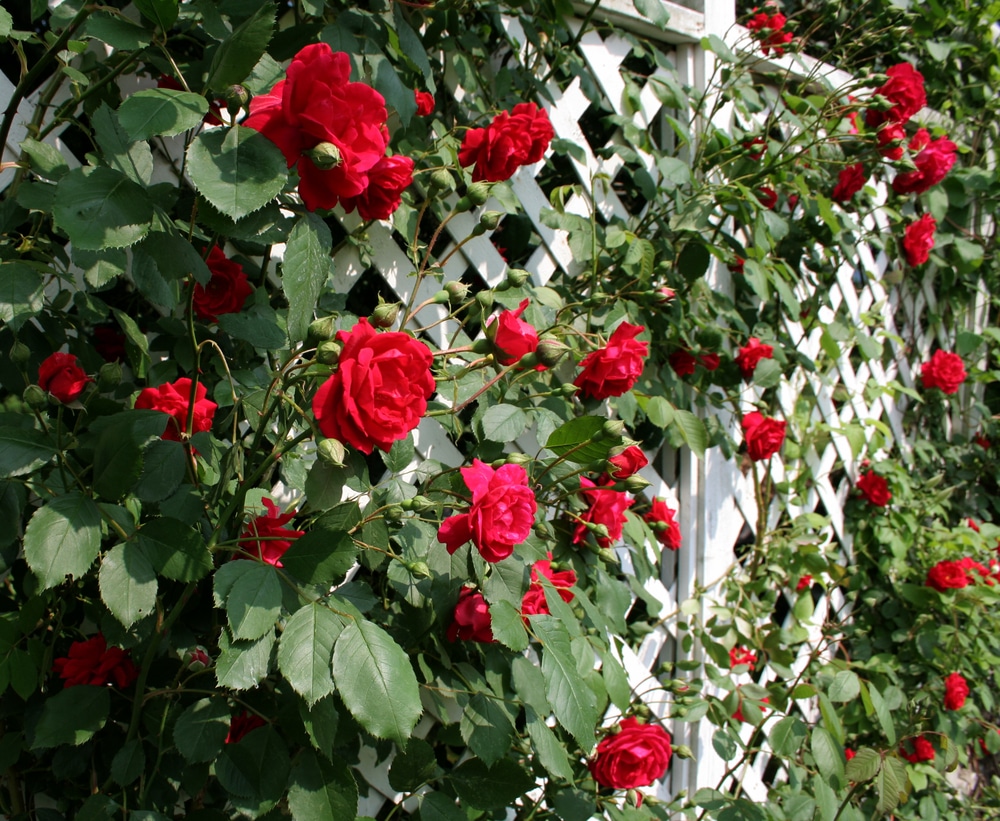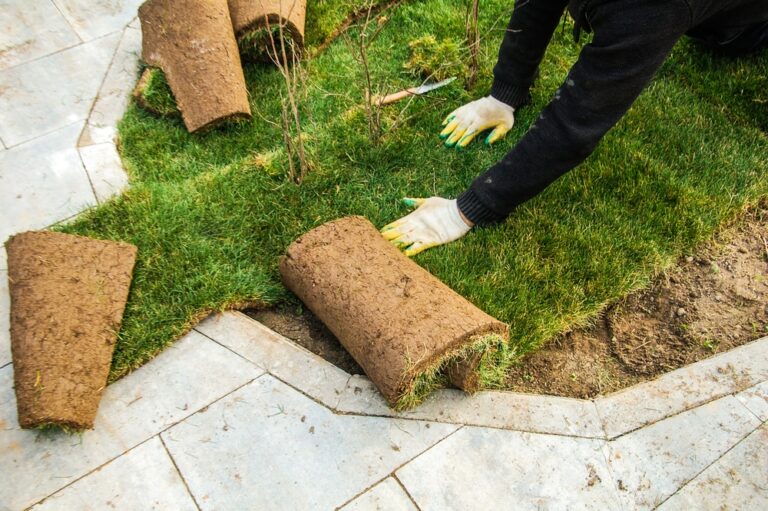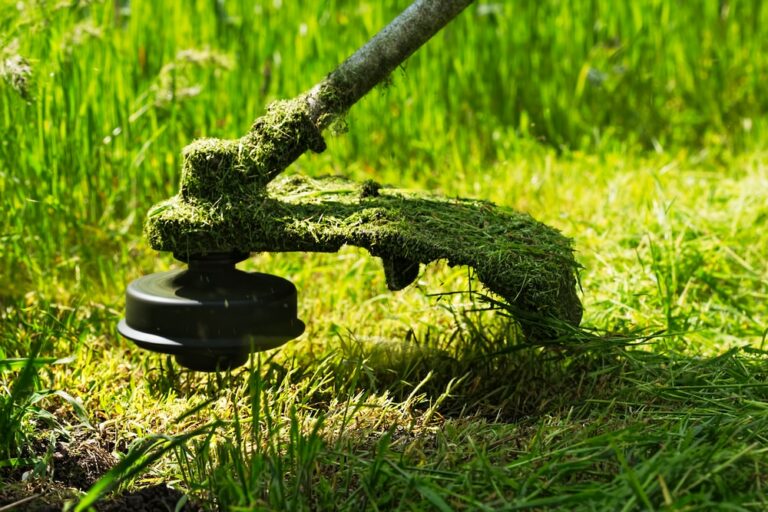If you have a rambling rose in your garden, you know that it can be a bit of a challenge to keep it under control. If you’re not careful, these roses spread widely and can take over your garden in no time.
This easy-to-follow guide will walk you through the essential steps on how to prune rambling roses to stay healthy and look beautiful!
Why Prune Rambling Roses?

Ramblers are a rose that proliferates and spreads across the ground and yet are frequently mistaken for climbing roses. Not many things are quite as captivating as a rambling rose in full bloom.
These lovely plants can grow up to 12 feet tall, with a sprawling habit that makes them perfect for covering fences or trellises.
However, the ramblers’ vigorous growth also means they can take over your garden if left unchecked. Therefore, floral beauties need regular maintenance to keep them looking neat and under control.
The best time to prune rambler roses is in late winter or early spring, preferably before the new growth starts. Pruning at this time of year will help to encourage more flowers and make them bloom earlier than they would if left unpruned until later on in the summer.
To ensure that your roses are healthy and look beautiful, you’ll need to prune them at least once a year. Also, pruning in early spring will help to keep the plant under control.
Pruning Rambling Roses: A Step-by-Step Guide
Now that you know why and when to prune your rambling roses, let’s look at how to do it correctly! Below is a step-by-step guide on pruning rambling roses to look their best.
Step 1: Choose the Right Tools for the Job
The first step in pruning your rambling rose is gathering all the necessary tools. You will need a pair of sharp, clean secateurs or garden loppers (depending on how big and heavy-duty you want), shears if there are any dead or diseased branches to be removed, and a sturdy ladder if there is anything high up that, needs cutting.
Step 2: Cut the Oldest Stems
Find old stems, which are usually brown and woody in texture. These stems have poor flowering capabilities.
These will be cut at a 45-degree angle right above where they meet new green growth on the stem below them (about two inches up from where they meet the stem).
Step 3: Prune Overgrown Branches and Tangled Stems
Look for any branches in your rose bushes that are crossing each other or growing in the wrong direction. Cut them back to their point of origin on an adjacent branch.
If the stems and branches of your rose bush are too tangled and unmanageable, cutting them to the ground is the best option.
Step 4: Remove Dead or Diseased Plant Parts
Remove all dead, diseased, or damaged parts with scissors or pruning shears; make sure your tool is clean before and after each use so you don’t spread disease between plants!
Step 5: Remove Sucker Growth
Remove any suckers growing from below soil level (these will be green, not brown).
Step 6: Shape Your Roses (Optional)

You can also prune your roses by fashioning them into a good shape, such as a “ball” or “vase”. To do this, find the centre of the rose and cut the stems back to about 18 inches long. This will encourage new growth in the centre of the rose, which will help shape it into a ball or vase.
That’s all there is to it! By following these simple steps, you can keep your rambling rose looking beautiful all season long!
How to Train a Rambling Rose on a Fence or Trellis
If you like to train a rambling rose on a fence or trellis, there are a few things you can do.
First, make sure that the trellis or fence is sturdy enough to support the weight of the rose vine.
Second, before planting your rose plant, tie it loosely to the vertical support with garden twine to be upright and not break under its weight.
Thirdly, you’ll need to prune your rambling rose every year for it to grow as desired – this step is essential if you want a healthy plant with beautiful blooms!
If possible, train two or three branches from your rose bush to grow up the trellis or fence. This will help keep the plant stable and looking tidy. Be sure to tie these branches in place as they grow.
If you follow these simple steps, your rambling rose will happily grow on your trellis or fence in no time!
Frequently Asked Questions About Rambler Roses

When’s the Best Time for Pruning Roses?
The best time to prune rambler roses is in the early spring or late winter after they have flowered. This will help ensure healthy and abundant blooms the following season.
What Tools Do I Need for Rose Pruning?
You will need sharp pruning shears and a clean bucket of water to place your cuttings into. Ensure your secateurs or pruning shears are clean and sharp. Dull tools can cause damage to the rose plant tissue.
It’s also helpful to have a pair of gloves and goggles, especially if you’re dealing with a thorny rose. This will prevent pricks that lead to fungal infections.
How Do I Prune a Rambler Rose?
You need to remove all dead, weak, diseased stems. It would help to cut back greyish, older stems as they don’t flower often. To be safe, leave at least four healthy stems standing and then cut back the side shoots to 3 inches.
How Hard Can You Cut Back an Overgrown Rambling Rose?
You can cut back a rambling rose to the ground, but this will result in a smaller plant for next year’s flowers.
What Should I Do if My Rambling Rose Is Not Flowering?
If your rambling rose is not flowering, it may need to be pruned more severely. Try cutting back the oldest canes and any tangled mess described in steps 1 and 2 above.
Do Ramblers Repeat Flowers?
Rambler roses are generally not repeat-flowering plants, but varieties that repeat flowers are now being developed.
What’s the Difference Between a Rambling Rose and Climbing Roses?
A climbing rose is a type of rose that climbs up a structure, such as a fence or a trellis. Ramblers tend to grow in all directions and do not need to be tied to any structures.
Rambling roses are also more vigorous growers than climbing roses.
In addition, rambling roses flower only once per year but have larger and more abundant blooms. Climbers, on the other hand, repeatedly flower during summer and fall. However, climbing roses have small flowers.
Is It Necessary to Remove Suckers From My Rambling Roses?
Yes, you should remove any suckers growing from below the soil level because they will compete with the main stem for resources. You can remove suckers by pinching them off or cutting them at the base with scissors or pruning shears.
Can I Prune My Rambling Roses in the Summer?
No, it’s best to wait until late winter or early spring after the roses have finished flowering. Pruning in the summer can result in scorched leaves and flowers.
What Gardening Products Are Needed for Growing a Rambling Rose?

To grow a rambling rose successfully, you will need garden shears, a sturdy ladder, gardening gloves, and goggles. You may also want to invest in fertilizers or pesticides to keep your plants healthy. Make sure you read the instructions on any products before using them.
Does a Trellis or Pergola Make Good Rambling Rose Support?
Yes, a trellis or pergola is ideal for growing rambling roses. It’s also possible to use other supports, such as wires and netting.
Pruning Ramblers With Ease
Pruning ramblers can be a daunting task, but it’s not as difficult as you may think. If you follow these simple steps on how to prune rambling roses, you’ll have a beautiful rose bush that produces plenty of blooms.
Please share this article with your friends and family if you found this article helpful! And if you have pruning tips to share with our readers, leave a comment below! We can’t wait to hear from you.







